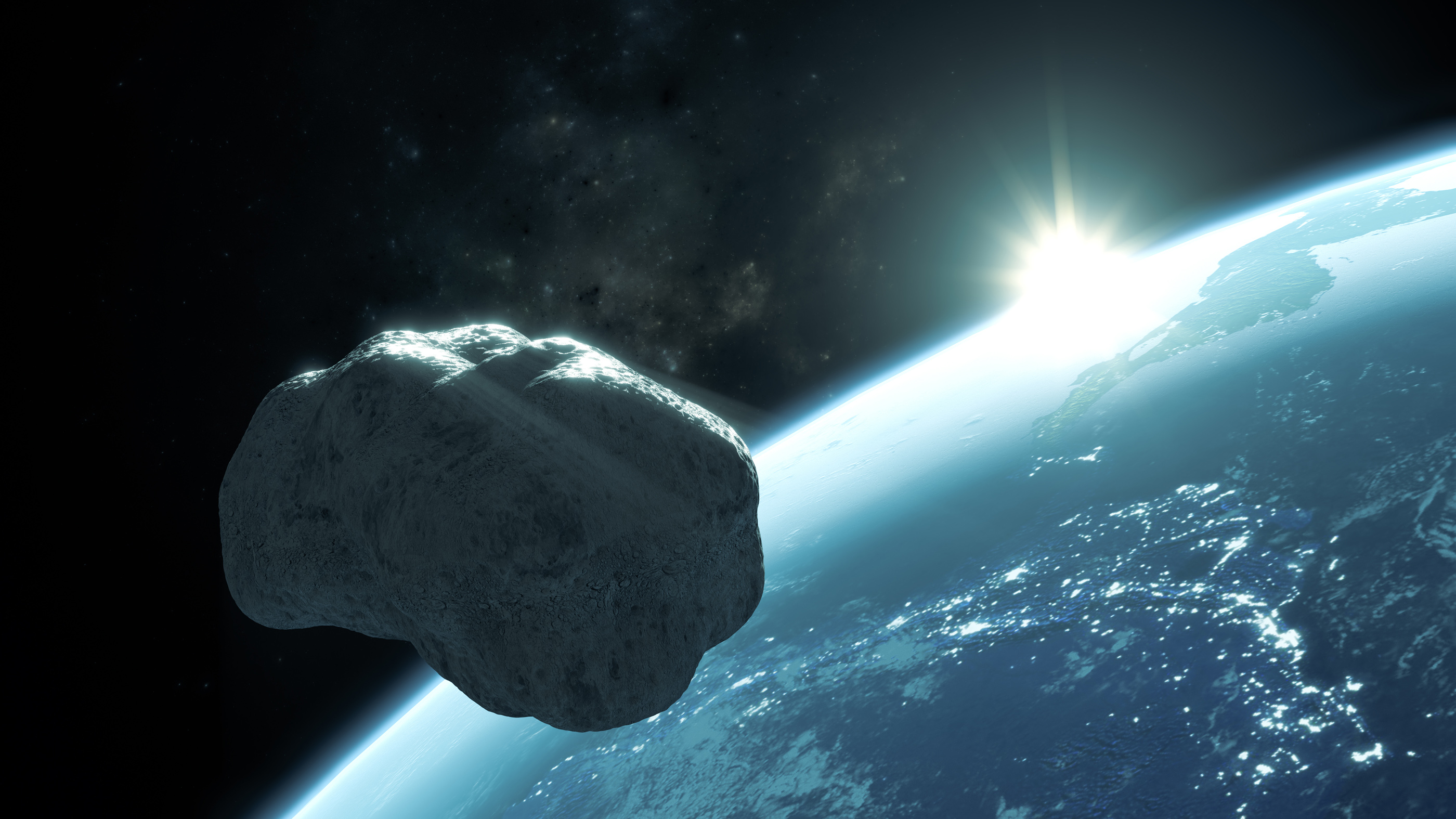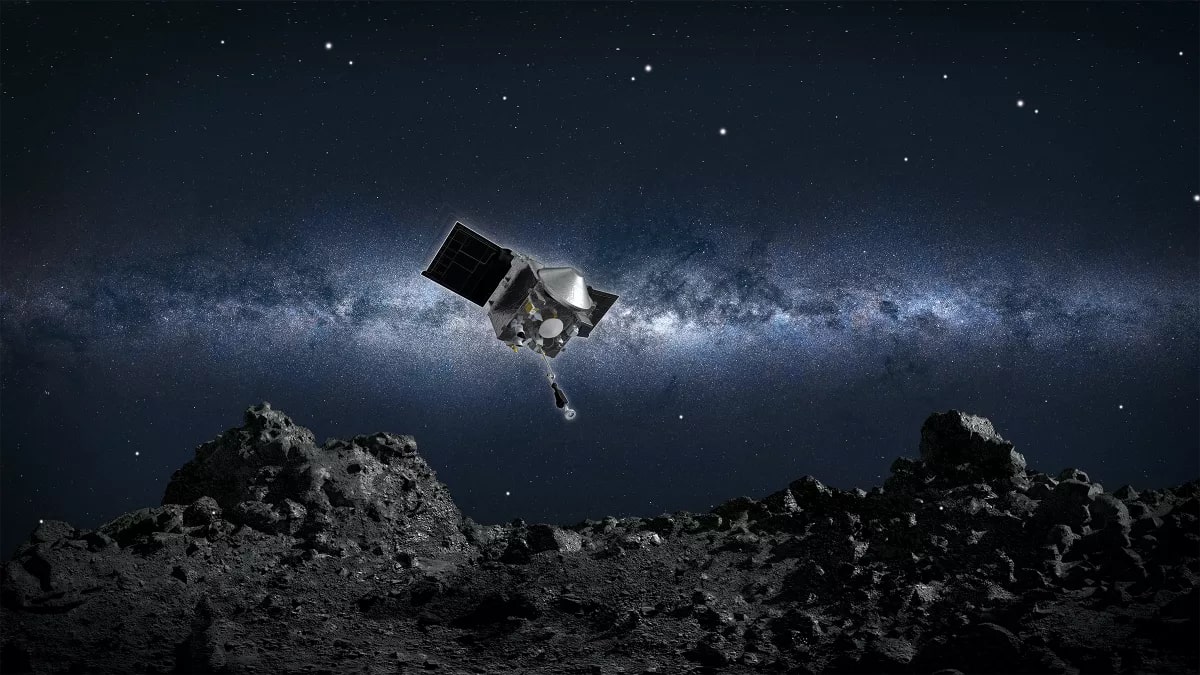$20 million NASA mission to visit 'God of Chaos' asteroid saved from budget cuts in last-minute decision
NASA's OSIRIS-APEX mission, which was one of 19 designated to be canceled by the Trump administration, has been saved from the chopping block in a last-minute decision. There will be a significant change to its structure, however.

NASA's plans to fly a spaceship alongside a potentially hazardous asteroid in 2029 will continue — for the next year, at least.
After threats of mission cancellation, the OSIRIS-APEX spacecraft received a last-minute $20 million allocation in the House budget bill to continue basic operations for the next fiscal year. The fates of 18 other NASA missions slated to stop operations on Oct. 1, however, remain unclear due to the ongoing government shutdown.
"We were incredibly relieved and grateful," Dani Mendoza DellaGiustina, principal investigator of OSIRIS-APEX at the University of Arizona, told Live Science in an email. The news was first announced Oct. 7 at a meeting of the National Academies' Committee on Astrobiology and Planetary Sciences, Ars Technica reported.
OSIRIS-APEX stands for "Origins, Spectral Interpretation, Resource Identification and Security — Apophis Explorer". The mission is slated to observe the quarter-mile-wide (400-meter) asteroid Apophis, which was once believed to pose a minor threat to Earth during an upcoming close encounter in 2029.
More observations fortunately showed that Apophis — which is named after an ancient Egyptian god associated with chaos — will instead fly safely by Earth. It will come very close, however: its trajectory will bring it inside the orbit of geostationary satellites, roughly 22,000 miles (36,000 km) away, potentially making it visible to the naked eye. But as Apophis crosses our planet's pathway periodically, there's still a risk of a direct impact in the distant future.
OSIRIS-APEX uses the OSIRIS-REx spacecraft that snatched a small sample of the asteroid Bennu in 2020, and brought the precious dust to Earth in a separate return capsule, providing critical information about our early solar system. The core spacecraft remains healthy, and both DellaGiustina and NASA have emphasized it will be cheaper to use an existing space mission to observe Apophis than to launch something new.

"Apophis is one of the most compelling near-Earth asteroids we've ever discovered," DellaGiustina said. "By studying Apophis during and after its Earth encounter, we have a unique opportunity to understand how close planetary flybys reshape small bodies: from seismic shaking and surface landslides, to changes in rotation and orbit."
Get the world’s most fascinating discoveries delivered straight to your inbox.
Nevertheless, in May the Trump administration placed OSIRIS-APEX on a list of 19 NASA missions that they intended to cancel, as part of sweeping cutbacks that would see the agency's budget slashed by nearly 25%, from $24.8 billion to $18.8 billion. The fate of the other 18 missions remains uncertain; the U.S. government has been in shutdown since Oct. 1 after lawmakers in Washington, D.C. failed to agree on this year's fiscal budget.
While OSIRIS-APEX's 2026-27 operations are secure, Congress requires a review of NASA funding every year. This means the mission, along with other NASA projects, will be reconsidered for funding in the next fiscal year.
DellaGiustina said she is hopeful the funding will continue. The mission was "explicitly named," she said, in the House and Senate versions of the fiscal 2026 NASA budget, thanks to support from the Arizona congressional delegation, particularly Sen. Mark Kelly (D) — a former NASA astronaut — and Rep. Juan Ciscomani (R), a graduate of the University of Arizona (the institution that leads OSIRIS-APEX, and which also led OSIRIS-REx).
"Congress recognized the value of keeping our healthy spacecraft and instruments operational as we cruise toward Apophis," DellaGiustina said. "It doesn't guarantee funding in future years, but it keeps us moving forward and gives us a fighting chance to carry out this once-in-a-lifetime encounter."
Future science at risk
While the funding came as a relief to the team, it's not all good news. The science team did not receive any funding for active research this year, which means that mission managers — and the early-career researchers they mentor, such as students — cannot do analysis, planning or mission science.
DellaGiustina said it was "disheartening to have to pause their participation for a year or more." In 2022, the last senior review of the NASA mission — a community effort undertaken roughly every three years to evaluate the benefits of scientific research — explicitly said that mentorship within the team would be beneficial for the space community.
"This long-duration mission presented an effective professional development plan, which would transition junior scientists into more senior roles as the mission progresses," the senior review stated, adding that most of OSIRIS-APEX's senior leadership — including DellaGiustina herself — came up through the ranks from previous, junior roles on OSIRIS-REx.
The two missions, meanwhile, continue to produce science papers each year; their scientific productivity got praise from the senior review team, which in 2022 flagged at least 137 papers produced "that reveal significant discoveries and insights into the structure and evolution of a small asteroid."
Many other papers have been published in the last three years, and more are coming up soon concerning Bennu's composition and origin, DellaGiustina said. Notably, a Nature paper in January showed that the parent body from which Bennu came had a sort of brine running through it, which included carbonates — the building blocks of life. "The parent body may have been similar to an ocean world," DellaGiustina said.

Elizabeth Howell was staff reporter at Space.com between 2022 and 2024 and a regular contributor to Live Science and Space.com between 2012 and 2022. Elizabeth's reporting includes multiple exclusives with the White House, speaking several times with the International Space Station, witnessing five human spaceflight launches on two continents, flying parabolic, working inside a spacesuit, and participating in a simulated Mars mission. Her latest book, "Why Am I Taller?" (ECW Press, 2022) is co-written with astronaut Dave Williams.
You must confirm your public display name before commenting
Please logout and then login again, you will then be prompted to enter your display name.
